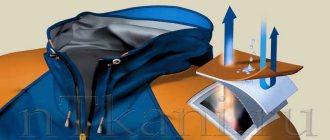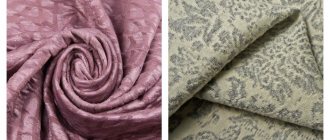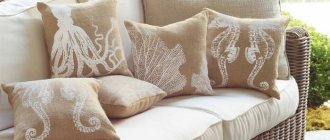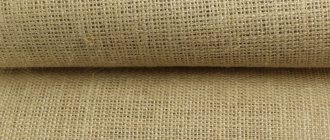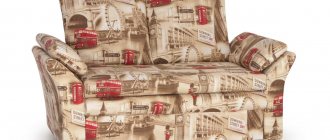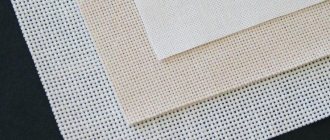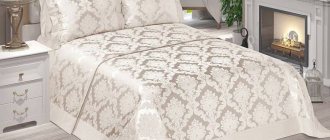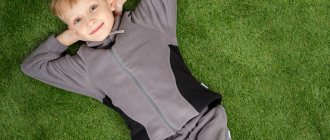There can be no clear answer to the question of which fabric is better. It all depends on the scope of its application, required functional properties, composition, price, in the end. The manufacturer is always guided when choosing by the cost of the material, the strength characteristics, and the durability of the future product.
Therefore, it would be correct to ask which fabric behaves under the right conditions and how long it will “live”. And depending on this, consider the materials and decide which is better and which is worse.
You can divide all fabrics into several large-scale categories:
- naturalness;
- application in tailoring;
- household use.
Here we will talk about them in more detail.
Description
So, stretch fabric, what is this elastic material that stretches perfectly, fits the figure and drapes. The stretch attachment unites a group of fabrics. Elastic properties are provided by the addition of spandex, lyra or elastane to the base composition of natural, artificial or synthetic threads. The percentage of elastic component ranges from 1-30%.
Spandex fiber has a unique structure. In it, flexible fragments of polyurethane are connected into a single chain by rigid bonds, which determine the degree of elasticity and prevent the particles from diverging. Lycra is not found in its pure form, but only as an additional component to impart elasticity and increase service life.
Elastane fibers are produced matte and shiny, transparent and translucent, so that, if necessary, they can add gloss to the material or remain completely invisible.
In English, the word "stretch" means to stretch.
The degree of stretch depends not only on the amount of spandex, but also on which thread it was added to: a piece, a weft, or both at once. Accordingly, you will get a mono-stretch that stretches in only one direction or a bi-stretch that stretches in any direction. Outwardly they are no different. The type is easily determined by the application of force.
Cotton fabrics
The first mention of cotton dates back to the 3rd millennium BC. Cotton fabrics were produced in India. Alexander the Great was the first to import cotton materials when returning from a campaign in India. After this, the fabrics spread throughout the Mediterranean.
The range of these fabrics over many centuries includes more than thousands of items. Cotton fabrics have their pros and cons. The fabric is valued as anti-allergenic, wear-resistant, hygroscopic and has a relatively low cost. Material shrinkage and creasing are disadvantages. To eliminate them during the fabric production process, raw materials are combined with other fibers.
The main raw material for cotton fabric is cotton bolls with cotton fibers contained in them. This is the basis of the threads. Their length depends on the length of the fibers. The density and thickness of the fabric will depend on the method of twisting the thread. In industrial production, there are seventeen groups of cotton materials. These are chintz, calico, satin, gauze, teak, towel fabric and others.
Classification of cotton fabrics according to seasonality is divided into:
- Demi-season ones, like tartan, poplin, taffeta, crepe and others.
- Summer with plain or combined weave. These include cambric, voile, voile, calico and many other fabrics.
- Winter ones, usually having a pile or rib structure with increased density. These are flannel, flannel and fleece.
Poplin was invented more than 5 centuries ago. According to existing legend, the name has Italian roots and denotes papal material. In the 14th century, the residence of the Pope was moved to Provence, the city of Avignon. It was famous for its textile production and had long traditions. Initially, poplin was used to make clothing for the clergy, but over time, it began to be used by other townspeople.
Types of mono-stretch fabrics
Even a small addition of lycra can change the properties of any material that immediately receives the “stretch” prefix. The main types of textiles with one-way stretching:
- Stretch jeans are a dense, medium-hard material that is resistant to mechanical stress. Used for comfortable everyday wear: trousers, dresses, shirts and jackets. Denim pants made from this material fit perfectly on the figure.
- Jersey is an elegant fabric made popular by Coco Chanel. Used for sewing dresses, suits and underwear. The composition can be synthetic and mixed. The fabric is highly elastic in the transverse direction, but has little stretch in length. Looks beautiful with folds and draperies. The material has also found use in the production of bathrobes, sleepwear and children's clothing.
- Thanks to elastane, stretch linen becomes more comfortable and almost does not wrinkle.
- Poplin is a ribbed cotton fabric for bed linen and summer clothing. Soft and dense material with high hygienic properties.
- Stretch velvet is a rich fabric with a good fit. Designed for evening and theater wear.
- Barbie is a suiting fabric for business wear and school uniforms. It is soft, durable and form-fitting due to its light stretch. Provides air exchange, does not wrinkle and lasts a long time.
- Stretch silk, which successfully combines strength and elasticity with gloss and chic. Suitable for party dresses, bedding and underwear.
- Tiar is a costume fabric, strict and versatile. It has a smooth surface with a small, diagonal ridge. 2% elastane content for a perfect fit. Suitable for dresses, jackets and suits.
- Stretch wool softly fits the figure, warms and does not wrinkle during prolonged sitting.
- Gabardine is a durable material made from wool or cotton with the addition of synthetics. It is distinguished by diagonal weaving of warp and weft threads. Keeps its shape well, light and thin.
- Bengaline is an airy and beautiful material, similar to silk. Produced mixed, natural or synthetic. Lycra content 2-5%. It does not wrinkle, retains its shape and is soft to the touch. The peculiarity is that the material stretches well in the longitudinal rather than transverse direction.
Choosing fabric, or How not to get lost in the textile world
Before you start reading this article, I want to ask you: take a look around. If you are currently at home, then you are now seeing a lot of different fabrics. This can be clothes, bed linen, curtains, tablecloths, pillow covers and a huge variety of textile items. If you are planning to add to your “textile collection”, then this article will most likely not be useless to you.
The choice of fabric in stationary and online stores is very, very, very diverse. The buyer is offered materials of various colors and types. And prices vary from several hundred to several thousand rubles per meter or yard. How to navigate this incomprehensibly huge world of fabrics and choose the best option for yourself so as not to regret the money spent?
I’ll say right away that I have absolutely no claims to originality or novelty. My goal is to collect in one article the most important information about some rules for choosing fabric and the basic properties of various materials. Moreover, I will focus on decorative fabrics and home textiles.
First of all, the choice of fabric should be based on its purpose and function. For example, if you need to purchase fabric for curtains that need to block sunlight, choose only thick, heavy fabrics. If you want the curtains to only slightly shade the room, you can give preference to thinner materials in lighter shades. The same applies, for example, to pillow covers. If you “dress up” pillows for sleeping with them, then you should choose natural, “breathable,” hypoallergenic, soft and at the same time durable fabrics. But fabrics with different textures and surface effects are also suitable for decorative pillows.
Having decided on the function of the fabric, you can move on to choosing a color. The future fabric product should be in harmony with the decoration of the walls and furniture in the room. Therefore, pay close attention to the selection of colors, patterns, and fabric textures.
There is one little trick. If you are in doubt about your choice, buy a small piece of fabric and, when you bring it home, place or hang it where you plan to use it. For example, if you want to sew new cushion covers, place a piece of fabric on the sofa. Observe how the fabric looks under different types of lighting. And give yourself a few days to take a closer look and finally decide on your choice.
When purchasing fabrics, the financial side of the issue is also important. If you are willing to pay for high quality and professional selection, you can contact the specialists in the design studio.
Buying fabric from a regular store will most likely cost less. You can also find great deals in online fabric stores. But there are some pitfalls here. Due to the color rendering of monitors, the actual shade of the fabric may not match what you see on the screen.
And now it’s worth talking about the most common types of fabrics for home textiles.
Cotton
Cotton is a natural fiber that is made from ripened cotton fruits. The quality of this fabric depends on the length of the fiber. The longer the fibers, the higher the quality of the material. Cotton is perhaps the most popular fabric in the world. In addition, it is considered one of the most ancient. The first mention of cotton material was made about 12 thousand years ago. India is considered the birthplace of cotton fabric.
Its international name is Cotton. This is a soft, quite durable and most environmentally friendly fabric. Cotton “breathes” perfectly, is hypoallergenic, pleasant to the touch, absorbs moisture well and does not electrify.
There are more than two dozen types of fabrics that are made from cotton fiber (kulirka, interlock, footer, terry, velvet, corduroy, denim, organdy, etc.).
Unfortunately, along with its undeniable advantages, cotton has several disadvantages. Most cotton fabrics wrinkle easily, shrink when washed, and take quite a long time to dry. Therefore, when caring for products made from such materials, you should adhere to a number of rules:
— wash at 40-60 degrees;
- do not use bleach when washing colored items;
- iron the products thoroughly after drying.
Polyester
Polyester is a synthetic fabric made from polyester fiber. Manufacturers are using it more and more often. What's the secret? In addition to the favorable price, the advantages of polyester are strength, wear resistance, resistance to light and heat. In addition, products made from such fabric retain their shape well, wrinkle little, are easy to wash and, as a rule, do not require any special care.
But polyester has a very significant drawback, which makes it impossible to use this fabric for many products. Polyester is not breathable enough.
Interestingly, the initial link in the production chain for the production of polyester is oil. Therefore, when we put on, for example, a fleece sweatshirt, we are essentially covering ourselves with hydrocarbons.
Linen
Linen is a unique material. Despite the labor intensity of its production, which is reflected in the cost, and subject to the development of the chemical industry offering synthetic and artificial fibers, the production of linen fabrics does not decrease.
The key to the success of this material is environmental friendliness. This is one of the few types of fabric in the production process of which only completely natural raw materials are used. Linen is durable, wear-resistant, has high thermal conductivity and breathability, and does not electrify.
Higher quality, thinner fabric is made from combed flax. It can be used to make table linen, bed linen, and clothing. Coarser linen fabrics are made from tow (short fiber). They are used to make canvas and burlap.
Some more interesting and useful facts about the qualities of flax. It turns out that this material has bacteriological properties. Flax contains a substance called silica (silicon dioxide), which inhibits the development of bacteria. Therefore, bacteria and fungi do not get along with it. In addition, flax kills germs. So this natural antiseptic saves us from many diseases. Linen is also used in surgery for suturing. The human body does not reject it.
Wool
Wool, like cotton or linen, is a material of natural origin. For its production, sheep, goat or camel wool is most often used. The most important quality of wool fabric is its ability to retain heat.
To be fair, it is very difficult to find pure wool fabric today. The thing is that manufacturers add synthetic fibers to wool. This reduces the cost of production. However, this fact does not mean that woolen fabrics are losing their relevance. They are in great demand due to their ability to retain heat, wear resistance, elasticity, and breathability.
In addition, wool is virtually wrinkle-resistant, stain-resistant, and does not retain odors (such as food, smoke, or sweat). During use, the wool mats and becomes even warmer.
Caring for wool products is not as easy as, for example, synthetic fabrics.
They can only be washed by hand at 30 degrees. Do not rub or twist.
Wool fabrics take a long time to dry. You can dry them on a flat surface, away from heating devices and away from direct sunlight.
Silk
Silk is also a natural material. It is obtained from the cocoons of silkworm caterpillars.
As you know, China is considered the birthplace of silk. In ancient times, the inhabitants of this country valued and protected the unique technology of silk fabric production so much that disclosing the secret was punishable by death. Nowadays, along with natural ones, artificial and synthetic silk fabrics are produced. But they all have similar advantages. First of all, it is strength, smoothness and unique shine.
Interestingly, natural silk threads are different. Their qualities depend on the country in which, under what conditions (natural or artificial) the silkworm caterpillars are grown, and even on the leaves of which plants they feed on. Naturally, the quality of the threads affects the properties of the material. In addition, the appearance and structure of the fabric depends on the method of weaving the threads.
The most popular types of silk fabrics are satin, satin, crepe, chiffon, organza, gauze, taffeta, and Dupont silk. All of them require a delicate attitude and especially careful care.
Since silk is essentially a protein that can be compared to the human epidermis, it does not tolerate high temperatures. Silk fabrics can be washed at a temperature not exceeding 30 degrees.
The detergent for washing should be special, intended for silk products. Regular alkaline powders can damage natural silk fabrics.
It is better not to bleach silk or soften it with special products. It cannot be dried in the drum of a washing machine, it cannot be twisted and dried in the sun.
It is better to iron silk from the wrong side.
Finally, you should avoid getting perfume, deodorants and other substances that contain alcohol on silk fabric.
Viscose
Viscose is a natural material obtained from wood cellulose. During its production, wood is crushed and boiled in an alkali solution. The resulting gray pulp is bleached, pressed and then processed to form threads.
Viscose can be called a “chameleon” because, depending on the processing method, it can resemble wool, silk or linen. However, most viscose fabrics are soft and pleasant to the touch. Products made from them drape beautifully. Moreover, if the manufacturer does not add matting elements to the fabric, it has a silky, very beautiful shine. In the household you can find tablecloths, curtains and bed linen made from viscose.
The undoubted advantages of this material include its hygroscopicity. It can absorb twice as much moisture as cotton. In addition, viscose is not electrified.
Viscose also has an obvious drawback. It's not very durable. Manufacturers try to neutralize this quality by weaving special reinforcing fibers into the fabric. In addition, viscose is a capricious material; if not properly cared for, a beautiful product can end up with a crumpled rag with pellets.
There are a number of prohibitions in caring for viscose. This includes machine washing and spinning, twisting, using aggressive detergents, ironing with a steamer (stains may form on the fabric from steam and splashes).
Proper care of viscose products involves hand washing or washing in a washing machine on a delicate cycle, using gentle detergents, and ironing with a damp cloth in the “silk” mode.
Types of bi-stretch
Bi-stretch fabrics are comfortable and attractive. The most popular materials include:
- Biflex, which is translated as “stretching in two directions.” The dimensions of the canvas can increase three times. It is durable and has a durable color in rich colors. Some types have decorative effects, flickering and holographic. Thermal conductivity and ability to absorb moisture allows you to use the fabric for hot days and carry out workouts comfortably. It is used for swimsuits, sportswear, stage and dance costumes, as well as for handicrafts; dolls are made from it.
- Diving or "second skin" consists of synthetic fibers such as polyester and lycra, as well as rayon and sometimes cotton. It has high strength and a shiny surface. It comes in two variants; microdiving for T-shirts and summer dresses and diving stretch, which is successfully used for sports jersey and shapewear. Clothing made from this fabric gives a slim silhouette and hides a few extra pounds.
- Kulirka and ribana are highly elastic knitted fabric made from natural cotton fibers with the addition of 5% lycra. The fabrics have high hygroscopic and breathable properties, are hypoallergenic and safe. In addition, they are durable and tear resistant. Mainly used in sewing children's clothing and items for newborns.
- Footer fabric is brushed cotton jersey, cozy and unpretentious. A small percentage of lycra enhances strength and elasticity. Suitable for children's items, home and sportswear.
- Butter is a soft, flowing and durable material made from viscose, polyester and lycra. It gracefully fits the figure and is pleasant on the skin. It can be plain and printed, matte or with a slight shine.
Artificial fabrics
Artificial materials are those that are obtained chemically, but from natural components. This origin makes them environmentally friendly and safe for health. The characteristics of artificial fabrics speak for themselves:
- high strength;
- ease;
- ease of care;
- variety of colors;
- high wear resistance.
Interestingly, for the production of fabrics, expensive raw materials are not used, but simple cellulose. Such fabrics are used not only for sewing things, but also as filler for bedding.
Advantages in clothing
An attractive feature of stretch fabrics is their ability to retain their shape and restore their original size. On a person, clothing follows the lines of the body, and after removal it corresponds to the contours when cutting. This quality allows you to create tight-fitting products and slimming, shapewear.
What is stretch fabric in clothing:
- Elasticity and extensibility;
- Shape stability and wrinkle resistance;
- Strength and wear resistance;
- Lack of burnout and destruction under the influence of external factors;
- Thanks to lycra, clothes become less dirty and stains are easily washed off;
- Air and thermal conductivity;
- Hygroscopicity.
The synthetic component gives the textile the characteristics of natural fibers. It is worth noting that when adding spandex to cotton or wool no more than a third of the composition, their performance qualities are preserved and enhanced by the properties of synthetics.
The disadvantage of viscous fabrics is their tendency to shrink significantly, so you should be careful when washing and caring for them.
Spandex is in demand in the medical field for the manufacture of bandages, elastic bandages, compression garments and knitwear.
Synthetic fabrics
Synthetic materials first appeared in 1938. Thanks to the fact that progress does not stand still, today the number of synthetic fibers exceeds the number of artificial and natural ones. As for the properties of materials, they depend on the source raw materials, but they all still have advantages:
- strength and durability;
- ease of care;
- abrasion resistance;
- low wear rate.
Of course, synthetics will never be compared with silk and cotton in terms of safety and hygroscopicity. But it has its own unique properties - elasticity, resistance to mold and bacteria, stretchability.
Wearing clothes made from synthetics is not recommended in the summer, as they have low air permeability and can create a greenhouse effect.
Many chemical concerns today dream of developing a new synthetic material so that it can be used in all industries. But it is important that such materials are safe and environmentally friendly for humans, otherwise their creation makes no sense.
Knitted fibers
The fabrics are knitted on machines from fibers of different origins: synthetic, artificial, natural. Knitted materials have many common characteristics. Among the advantages are:
- pleasant to the touch;
- elasticity;
- low maintenance and durability;
- hygiene;
- wide scope of application.
But if the raw materials are cheap and of poor quality, then the knitted product will quickly lose its shape, shrink or stretch.
Mixed raw materials are often used to make knitted fabrics. Among the well-known knitted fabrics are:
- Diving. This is the best material for sewing sportswear. Due to the fact that it is tight, many people call it a second skin.
- Interlock. This is a natural fabric, dense, sweaters, vests, and caps are sewn from it. The structure is double-sided and looks like an elastic band.
- Kulirka. This is the simplest and most popular material for sewing summer clothes or underwear. The fabric stretches in length, but does not stretch in width. It has high air permeability and absorbs moisture.
- Mahra. Loop pile is available on one or both sides. The main feature is hygroscopicity.
- Fleece. This is the softest, most comfortable, homely material, made of 100% polyester. Keeps warm for a long time, is easy to care for, and pleasant to the touch. They make a lot of things out of fleece - sweaters, pants, pajamas, clothes for the house, etc.
- Footer. The material is thick, with fleece on the reverse side. It differs from the rest in its extraordinary softness and tenderness. The main area of application is sewing clothes for children.
In order for knitwear products to last as long as possible, they need to be properly cared for. Preferable washing is with liquid detergents, no twisting allowed.
Convenience, quality, beauty, and durability of a product largely depend on what material it is made from. In the modern textile industry there are many types of fabrics, everyone can choose what suits their taste.
Application
Stretch fabrics are especially valued in clothing. In addition, the elastic material looks great in furniture upholstery and home textiles.
- All types of women's clothing: dresses, skirts, blouses, jackets;
- Tight and tight trousers, jeans and leggings;
- Dresses for special occasions;
- Sportswear, suits and tights;
- Men's shirts and jackets;
- Dressing for theater and circus performers;
- Underwear items;
- Swimwear for children and adults;
- Socks and knee socks;
- Women's stockings and tights.
Fabrics for sewing bedspreads, covers, decorative pillowcases and capes are made from fabrics with the addition of spandex. The pliability of the material makes it easy to obtain the desired shape.
Care
What you should know about caring for stretch products:
- Avoid intense mechanical impact during washing. Avoid spinning at high speeds, twisting and rubbing contaminated areas.
- Sudden temperature changes during washing and rinsing lead to shrinkage.
- Wash by hand or on delicate cycle.
- Limit water heating to 30°.
- Do not use aggressive chemicals and bleaches;
- Leave wet items to drain naturally.
- Dry flat or on hangers away from sunlight and heat sources;
- Stretch items do not require ironing. If necessary, the heating regulator is set to the “synthetic” or “silk” position, and the iron is moved over the surface without stretching movements.
Important!
It is prohibited to steam elastic products. This leads to shrinkage.
Caring for products made from elastic fabrics
Before you begin washing or cleaning, you must carefully read the descriptions on the label. In general, the requirements for various stretch materials can be listed in the form of the following rules:
- It is best to wash things by hand. When machine washing, use only the delicate cycle. The water temperature should not exceed 300C;
- elastane fibers do not tolerate aggressive chemicals, so you should use liquid products and do without bleach;
- It is impossible to twist, let alone wring out, the products so as not to destroy the fibers. It is best to hang clothes on hangers over the bathtub and let the water drain;
- It is better to dry things in the shade, away from direct sunlight. After the first wash, it is advisable to put new clothes on a mannequin while wet to avoid shrinkage;
- Stretch fabrics most often do not need ironing. However, if such a need arises, then the iron is not moved over the fabric, but carefully rearranged so as not to stretch it unnecessarily. In this case, the regulator should be in the “synthetic” or “silk” position;
- Elastic fabrics should not be steamed as this will cause them to shrink.
By following these simple rules, you can keep products made from stretchable materials in excellent condition for a long time. Tracksuits and swimsuits, ballroom and casual dresses, hosiery and home textiles will delight you with the brightness of colors, soft silky texture and high performance.
